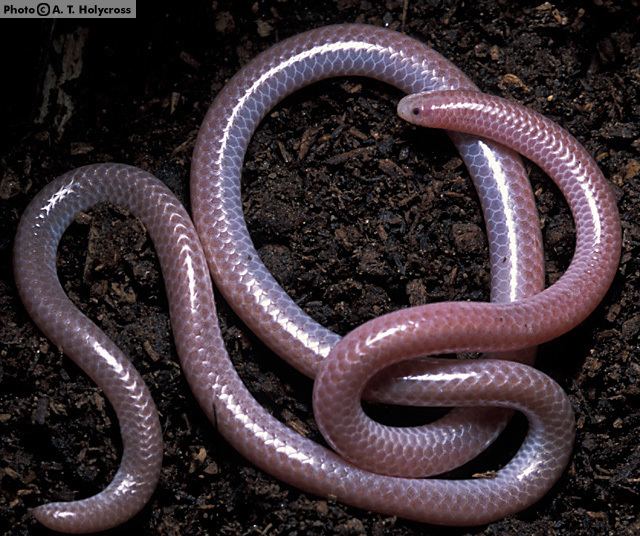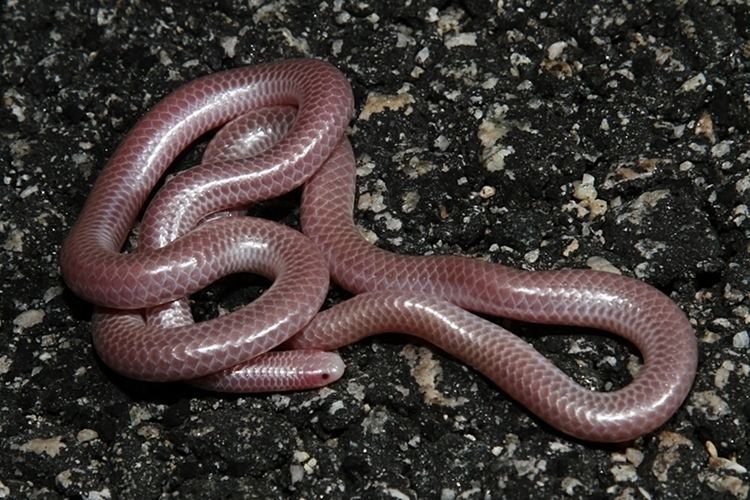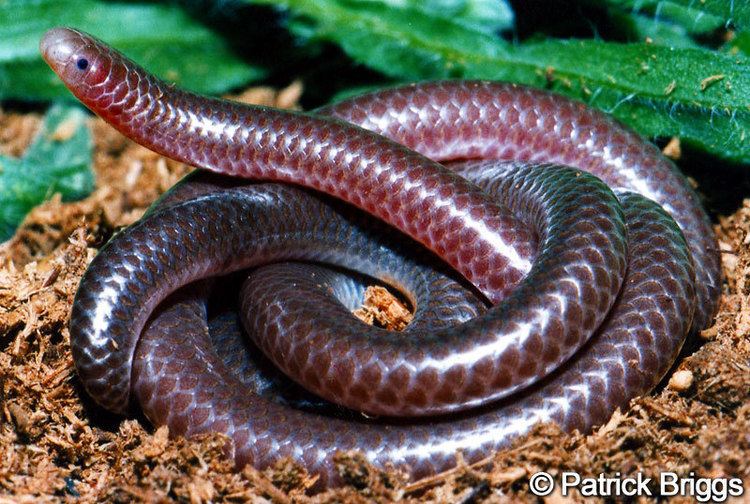Kingdom Animalia Suborder Serpentes Genus Leptotyphlops Phylum Chordata Rank Species | Subphylum Vertebrata Family Leptotyphlopidae Scientific name Leptotyphlops humilis Higher classification Leptotyphlops Order Scaled reptiles | |
 | ||
Similar Snake, Scolecophidia, Reptile, Leptotyphlops, Leptotyphlopidae | ||
Leptotyphlops humilis
Leptotyphlops humilis is a blind snake species endemic to the southwestern United States and northern Mexico. Nine subspecies are currently recognized, including the nominate subspecies described here.
Contents

Description

This species, like many of the others in this family, resembles a long earthworm. It lives underground in burrows, and since it has no use for vision, its eyes are mostly vestigial. The western blind snake is pink, purple, or silvery-brown in color, shiny, wormlike, cylindrical, and blunt at both ends, and has light-detecting black eyespots. The snake's skull is thick to permit burrowing, and it has a spine at the end of its tail that it uses for leverage. It is usually less than 30 cm (12 in) in total length (tail included), and is as thin as an earthworm. This species and other blind snakes are fluorescent under low frequency ultraviolet light (black light).

On the top of the head, between the ocular scales, L. humilis has only one scale (L. dulcis has three scales).
Common names
Western slender blind snake, western threadsnake, western blind snake.
Geographic range

It is found in the southwestern United States, South Florida, and northern Mexico. In the US it ranges from southwestern and Trans-Pecos Texas west through southern and central Arizona, southern Nevada, southwestern Utah, and southern California. In Mexico its distribution includes the Mexican states of Baja California, Sonora, Sinaloa, Nayarit, Jalisco, Colima, Chihuahua, Durango, Coahuila, Tamaulipas, and San Luis Potosí.
The type locality given is "Valliecitas, Cal." The type locality was restricted by Klauber (1931) to "vicinity of Vallecito, eastern San Diego County, California," and by Brattstrom (1953) to "the Upper Sonoran Life Zone of the Vallecito area and in Puerto Rico."
Habitat
The snake lives underground, sometimes as deep as 20 metres (66 ft), and is known to invade ant and termite nests. Its diet is made up mostly of insects and their larvae and eggs. It is found in deserts and scrub where the soil is loose enough to work.
